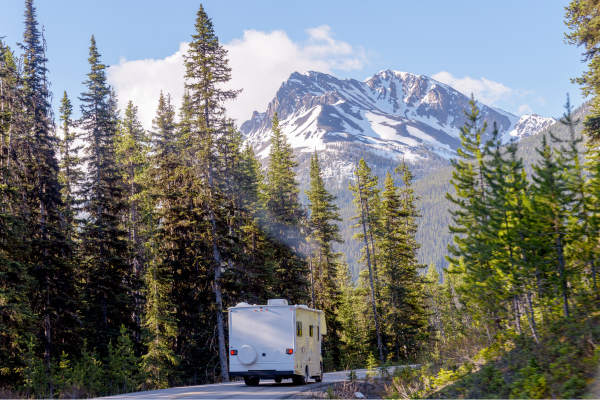

Staying safe during cross-country drives or short jaunts to a nearby national park can be done with minimal work prior to departure. While it may seem like a daunting task, a bit of planning and prepping can have you checking this task off the ‘to-do’ list easily and effectively.
Being proactive might not prevent an accident, but it will prepare you to react quickly in the case of an emergency rearing its ugly head.
RV First Aid
Whether you buy a fully stocked first aid kit or compile your own, there are certain necessities that should be included. A checklist can be helpful to ensure that the kit contains everything that’s needed. Here’s a short list of optimum ingredients for your RV first aid kit:
- Hypoallergenic adhesive tape
- Non-stick gauze pads
- Gauze rolls, in sizes 2 inch and 3 inch
- Alcohol swabs
- Hydrogen peroxide
- Calamine lotion
- Antiseptic wound cleanser
- Antiseptic wound wipes
- Splints
- Burn topical
- Aloe vera topical
- Cotton swabs or cotton balls
- Ice packs
- OTC meds (cough and cold meds, Pepto Bismol, antihistamine, etc.)
- Bug spray
- Eye drops
- Scissors
- Tweezers
Additional items that could be added include bottled water, sunscreen, assorted sizes of adhesive bandages, and pain relievers such as Tylenol. A few other items to toss in the kit include a CPR shield, thermometer, face mask, and hand sanitizer.
Fire Prep
To start with the basics, before every trip, be sure to check the smoke alarm and ensure it has fresh batteries. Most smoke alarms last for about 10 years, so you won’t have to replace the actual device often, but batteries should be changed on a regular basis. It is also wise to check the CO alarm often as well. Both of these warning systems should have a ‘test button’ to ensure the alarm is working.
Make sure you know exactly where your fire extinguishers are and how to use them. Most factory-installed extinguishers are mounted in an open space on the wall, or inside of a cabinet. It’s a good idea, though, to have several extinguishers located in strategic places.
Ensure emergency egress windows open properly. Test how to open the window. If you travel with kids, be sure they know how to open these windows and go over an evacuation plan with them as well.
Weather Issues
It’s likely that no matter where you travel, or when you travel, some sort of inclement weather will find you. There’s no way to hide from that threat. However, there are some tips and guidelines to follow to keep you and your RV as safe as possible.
First, if you are driving and get an alert on your phone for bad weather nearby, consider pulling over at a rest area or truck stop to wait out the storm. If a tornado warning has been issued, don’t stay in the RV. Go inside the truck stop and wait for the storm to pass before resuming the trip.
If the driving area is having or is expected to have torrential rainfall and you can’t make it to the intended destination in time, it is recommended that you park somewhere safe and wait it out.
Perhaps you are already at the RV resort and have set up camp when strong winds are in the forecast. This is when you should take some proactive measures to help protect your RV. Bring in the slideouts, retract the awnings, and pack up all outdoor gear — trash cans, grills, outdoor camp chairs, and anything else that could be carried off by the wind. Again, if a tornado warning has been issued for your location, don’t stay in the RV. Head to the resort office or designated storm shelters.
Traveling with a weather radio or a comparable phone app is recommended. Either option can help you stay alert and prepared for mother nature.
RV Maintenance
Checking the tires, under the hood, and the roof before every trip is commonly recommended. Ensuring that everything appears to be in good working order can almost always save headaches down the road.
The most common RV problems to be prepared for include:
- Failing batteries
- Plumbing leaks
- Flat tire/blown tire
- Holding tank issues
To ensure you are prepared for potential maintenance issues, be sure to read the manuals. Even if you are an experienced RVer, taking a few minutes to review the how-to section is recommended. This will reassure you that the systems are properly being cared for.
Some suggestions to do each month include:
- Run the generator under a load.
- Run the engine and check to see if there are any cracks or leaks.
- Check the tires and check the weight distribution (inspect for dry rot or cracks and clean off buildup such as tar, dirt, or oil).
- Check the seals and fill in any gaps to avoid air and water damage.
- Clean and lubricate the slideouts.
- Clean the air conditioning unit. Remove any dust or dirt by vacuuming out the vents.
Roadside Safety Kit
In the event you have to do some mechanical work outside of the RV, it is best to have safety gear on hand. A list of safety gear each RV should have at the ready includes:
- Brightly covered vest (think orange or neon)
- Jumper cables
- Hazard triangles, reflective/neon
- Traction mats
- Spare tire
- LED flares
- Tire chains
- Tow straps
- Jump starter
- Heavy-duty gloves
- Multi-tool
Additional items to consider keeping on hand during trips include body warmers and/or a thermal survivor blanket, a compass, solar radio, fire starter, poncho, small tent, and waterproof matches. Copies of important documents should be carried out on trips, along with copies of vet records for accompanying dogs or cats, and extra pet food.
Most trips go smoothly, but if a hiccup occurs, you can be prepared with these tips and suggestions.
|
Kevin Tadlock is president of National Vehicle in Omaha, Nebraska. He is an avid outdoorsman and spends all the time he can with his wife and two daughters experiencing nature. He loves RVs and has spent the last 15 years helping buyers and sellers find each other without paying for a dealer or broker. National Vehicle is an RV marketing firm in Omaha, Nebraska; for more information click here! |


Leave a Reply